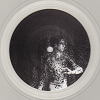The social revolution of the nineteenth century cannot take its poetry from the past but only from the future. It cannot begin with itself before it has stripped away all superstition about the past. The former revolutions required recollections of past world history in order to smother their own content. The revolution of the nineteenth century must let the dead bury their dead in order to arrive at its own content. There the phrase went beyond the content – here the content goes beyond the phrase.
– Karl Marx, “The Eighteenth Brumaire of Louis Bonaparte”
Marx argued in one of his most famous essays that his revolution could not take its cues from the past, as so many had done, but had to forge for itself new symbols and new ideas. One hundred and forty years later Jacques Derrida argued that Marxism’s future laid in its past; that the fall of the Berlin Wall will bolster Marx’s specter (hauntology). Our relationship with the past is an important one, and determines how we shape our future. Do we shed the past (as Marx and Shed have implored us) or orient ourselves towards it in order to progress? In the relentlessly futurist genre of techno, it’s a crucial question. The records of techno’s salad days haunt us constantly; their visions of an unrealized future still inform ours. It’s these sort of ideas that I find myself mulling over while listening to the latest Hauntologists record, not because it sounds dated (hardly) but because it was created using decidedly vintage techniques (just look at pictures from Jay Ahern’s Bunker appearance). That he and partner Stefan Schneider of To Rococo Rot rely on older analog equipment explains the subtle, almost evolutionary degree of progression that characterizes their third EP together.
The A side is playful in a laconic sort way, like watching old dogs frolicking at their own labored pace. Stubby bass notes and synth pulses plod forward deliberately between the occasionally shifting 808 patterns, but all the action comes from how the elements dissolve or hang around, tripping new incidental pitches and kicking up aural dust. It’s a track which rewards patience and close listening but offers enough groove to work in a club setting. The B side is a bit more geared towards the dance floor. On B1 the pair conjure a wailing siren sound from their gear that, while not alarming, adds a dose of druggy dread to the pit of tones burbling below it. B2 is similarly dark but more bustling, calling in more elements than both of its predecessors combined that close in on the listener with unsteady gaits. It leaves your ears uncertain whether the droning bass sentries, the dribbling, impish progressions, dread-inducing squeals or the slice and dice of 808 hi-hats will pounce first. Unpolished but not unrefined, each is a first class techno cut that you sink into and admire as the dubbed out grooves envelope the room. The ghastly figure adoring the record’s label aptly represents both the sounds and the hauntological-theory behind EP3. The present is indeed defined by the apparitions of the past, but Marx would be surprised to see that it’s from the symbols and machines of the past that the future (of techno, at least) emerges.














